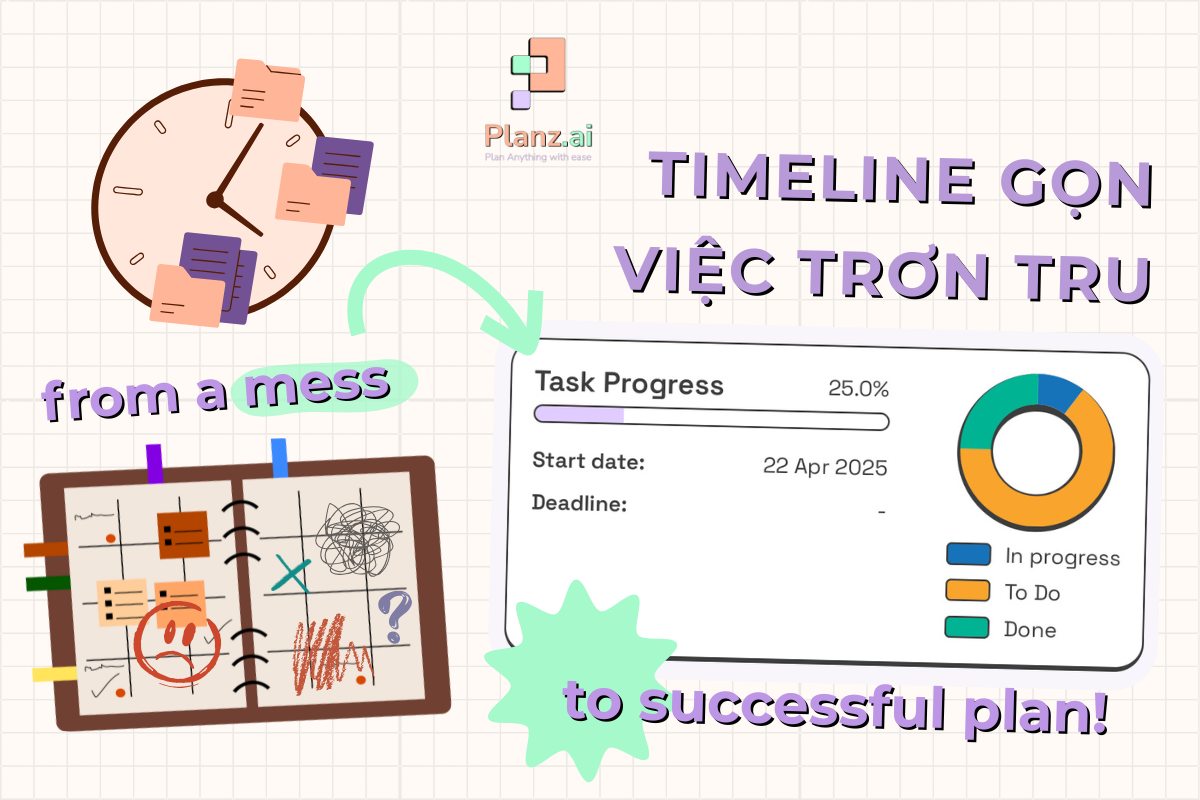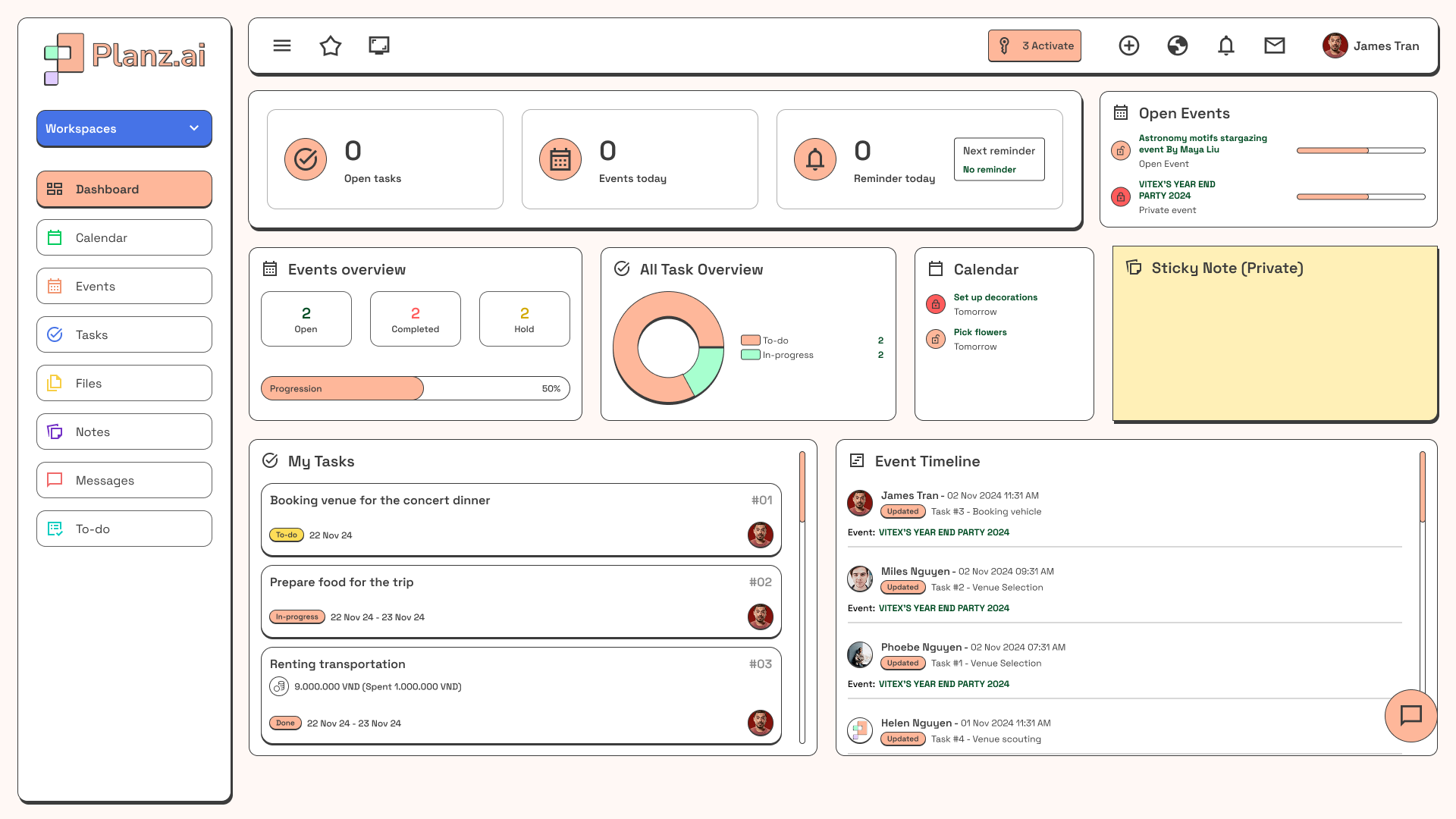Internal events are becoming an essential part of the work handled by not just dedicated event teams, but also internal communication professionals, HR staff, and even office admins.
This article is a deep dive into the real skill set behind the people who plan and run internal events—from soft skills to team management, from content creation to using the right digital tools. And if you’ve ever found yourself wondering, “What am I missing when organizing internal events?” — hopefully, this guide will give you some helpful answers.
What Makes a Great Internal Event Organizer?
Foundational Skills: The essentials that often get overlooked
Most internal event planners don’t come from a formal training background. There’s usually no official mentor, no comprehensive checklist, and no structured onboarding. Instead, many people learn by figuring things out along the way. But no matter your starting point, there are three core skills you should build as early as possible.
1. Communication & coordination
You can’t run internal events alone. Even a small internal gathering involves at least five key groups: leadership, HR, design, internal comms, and the participants themselves. Add external vendors or partners to the mix, and it becomes even more complex. How you communicate with each of these groups directly affects the quality and outcome of the event.

A great internal event organizer doesn’t have to be the loudest in the room, but they must be clear and intentional: saying the right thing, to the right person, at the right time, and in the right way. They also need to know when a phone call works better than a chat message, when an email beats a quick DM, and when it’s time to call a meeting instead of pinging five people separately.
Strong communication helps you avoid common pitfalls like:
-
Misunderstood deadlines because no one confirmed the details;
-
Designers going in circles because of a missing or vague brief;
-
Leadership misunderstanding the event’s purpose due to lack of timely updates.
2. Time Management & Multitasking
Planning internal events is rarely your only job. In any given week, you might be writing the company newsletter, running an employee survey, and preparing for a quarterly team building – all at once.

So instead of trying to juggle everything simultaneously (and burning out from doing it all separately), you need to:
-
Prioritize tasks wisely — figure out what needs to be done now and what can wait.
-
Estimate time accurately — don’t fall into the trap of overestimating your capacity or thinking you can “power through” everything.
-
Build a reliable reminder system — don’t just rely on your memory or gut feeling.
Tools like PlanZ can help you split tasks, assign them to teammates, set deadlines, and track progress automatically. Think of it as your unpaid but highly effective assistant.

3. Communication Mindset & Storytelling
A successful internal event isn’t just about getting a big crowd. What truly matters is:
- Does it reflect your company culture?
- Does it spread positive energy?
- Does it actually help people feel more connected?
That’s where a storyteller’s mindset comes in. Treat each internal event like a chapter in your company’s ongoing story. From the event’s theme and flow to small details like invites or follow-up posts, each element is a chance to communicate your internal values.

You don’t have to be a professional copywriter or content creator. Just ask yourself:
“What story is this event trying to tell?”
If you can answer that, you’re already making your internal events more meaningful and more memorable.
Execution Matters: Ideas Only Work When You Can Deliver
A creative idea is great—but without the ability to turn it into action, it’s just words on paper. That’s why strong execution skills are just as important as inspiration when planning internal events.
1. Always Start with a Clear Objective
Not every internal event needs to be over-the-top. But every event needs a clear goal. For example:
-
Welcoming and bonding with new hires?
-
Celebrating high-performing teams?
-
Spreading a key message from leadership?
Once you define the goal, you can then decide the right audience, format (talk show, award ceremony, outdoor activity, etc.), and the right metrics to measure success.
2. Create a Detailed (and Flexible) Timeline
A good timeline isn’t just for tracking progress, it’s for helping the whole team know who’s doing what, when it’s due, and what matters most.
With a tool like PlanZ, you can:
-
Break down tasks by stage (pre-event, live, post-event)
-
Assign specific team members
-
Monitor real-time updates
-
Adjust easily when plans change

Don’t keep your timeline in your head or on sticky notes. Make it clear, accessible, and collaborative for everyone involved!
3. Organize Files & Info Like a Pro
“Where’s the final run sheet?”, “Who has the updated event poster?” or “Did we send the script to the MC yet?”. If questions like these come up 10 times a day, they’re not just annoying, they drain team morale fast.
Set up a centralized, clear, and shared system for all event documents. Using smart tools, for example, you can:
-
Attach files directly to tasks
-
Assign owners
-
Get automatic reminders before deadlines

That means less confusion, less wasted time, and fewer repeat questions.
Beyond Skills: What Else Do Internal Event Planners Need?
Strong personal skills are essential, but they’re not enough on their own. If you want to thrive long-term in internal event management, you’ll need a full support system, including both the right tools and the right mindset.
1. The Right Project Management Tool
If you’ve ever run an internal event from A to Z, you know how overwhelming it gets – dozens of small moving pieces, ever-changing deadlines, and a busy team. A simple, visual project management tool like PlanZ can help you:
-
Auto-generate event templates with AI
-
Map out timelines for each task
-
Assign responsibilities clearly
-
Instantly notify the team of any changes
-
Track progress in real time

This becomes especially helpful for multi-phase events – planning, promotion, execution, and post-event wrap-up. No more lost deadlines, missed tasks, or confusion from last-minute changes.
2. A Culture-Centered Approach
Lastly – and just as importantly – internal events aren’t just for fun or formality. They are a strategic tool for building company culture.

Next time, ask yourself:
“What cultural value is this event reinforcing?”
Is it pride? Belonging? Curiosity? Or simply giving people a much-needed breather? Once you answer that, you can design an event that’s not just well-run, but also emotionally resonant. And that’s when your internal events start becoming truly unforgettable.
So, Are You Ready to Lead an Internal Event That Matters?
A great internal event planner isn’t just someone who can organize things neatly. It’s someone who knows how to connect people, understand emotions, and inspire a whole team – often through the smallest details in a program.
This job asks for sharp instincts, patience, creativity, and control – all at once. But in return, you get to create experiences that make colleagues feel grateful, seen, and proud to belong.
And along the way, don’t be afraid to lean on technology. A tool like PlanZ helps you plan events, manage teamwork, track progress, and report results. It’s the extra pair of hands that helps you run every internal event more smoothly, professionally—and with a lot less stress.

















WRITE A COMMENT